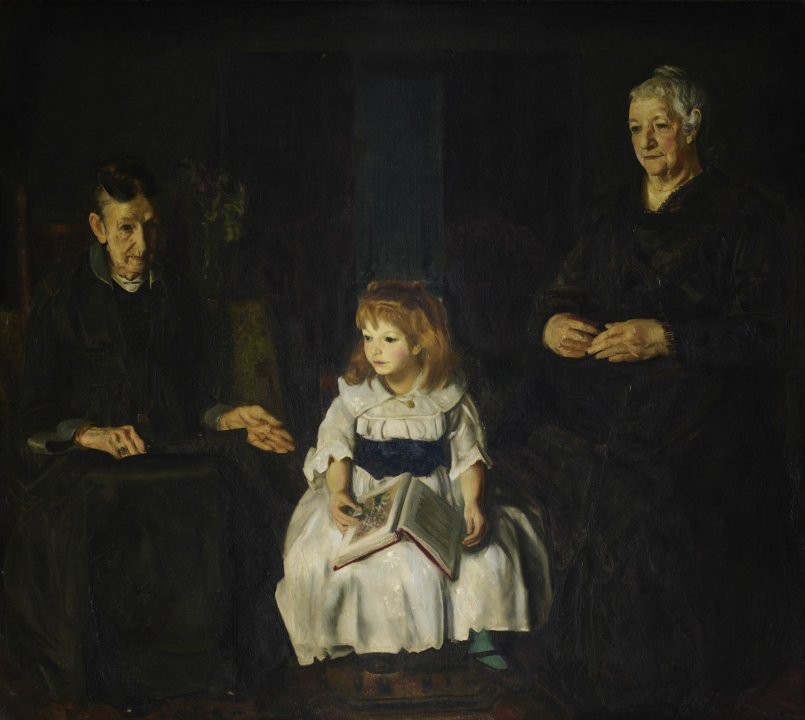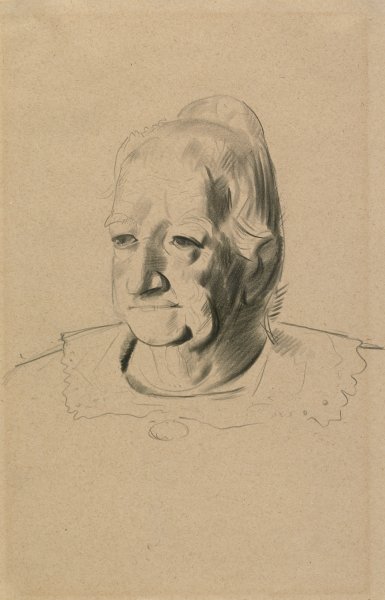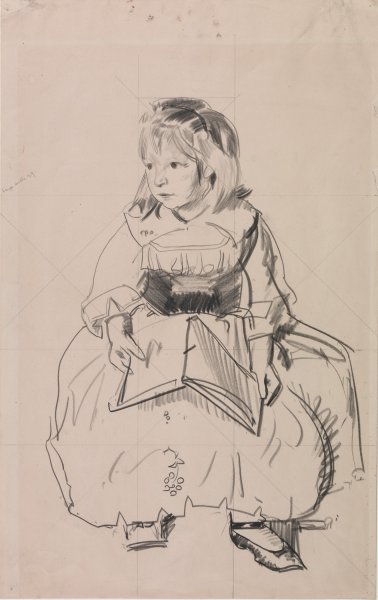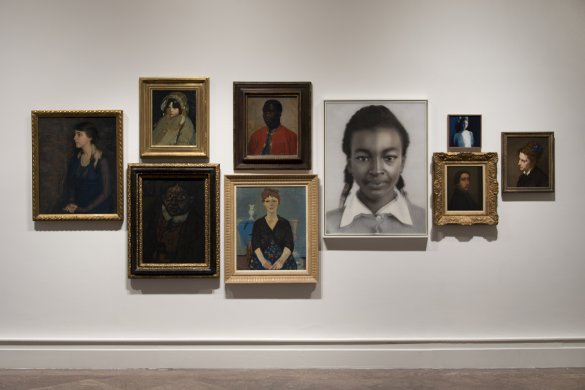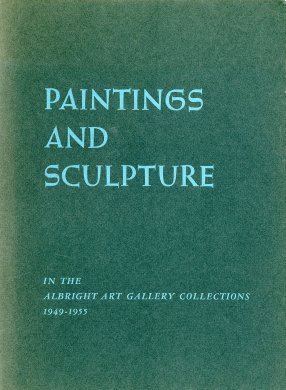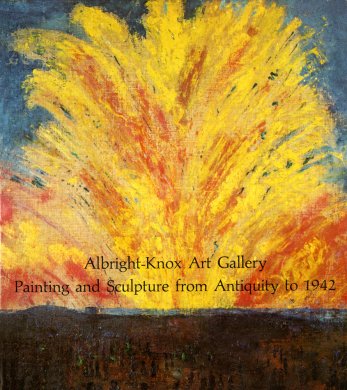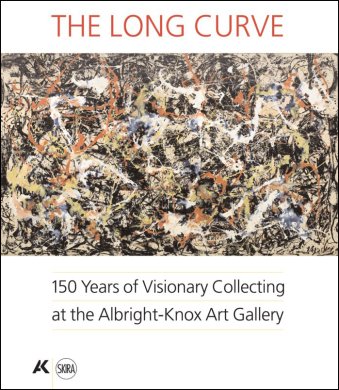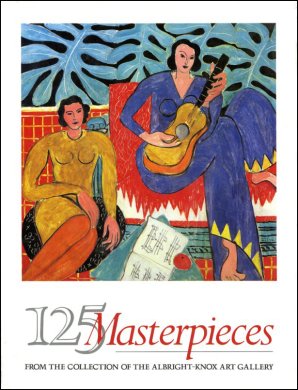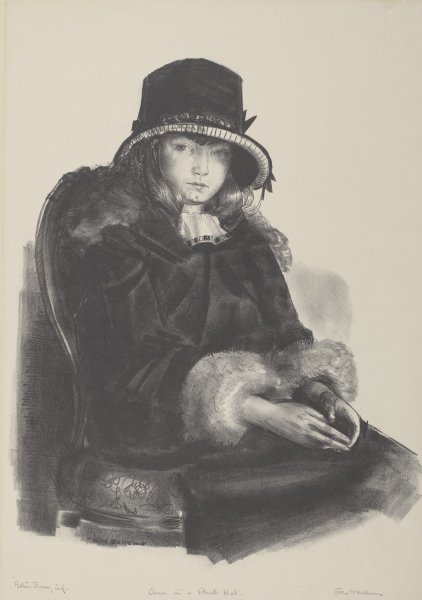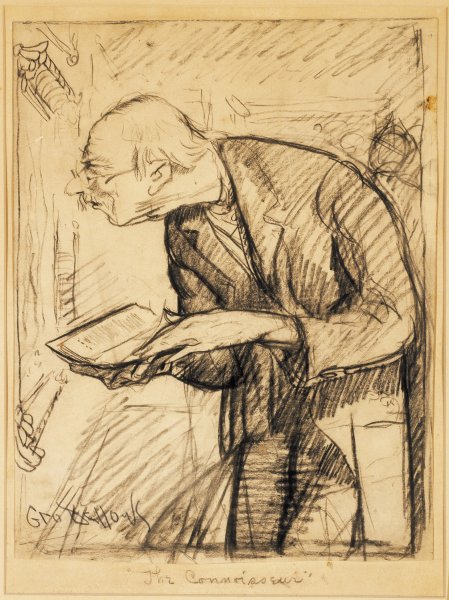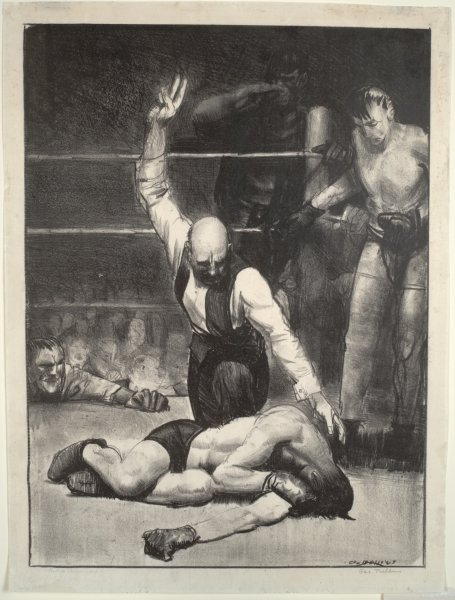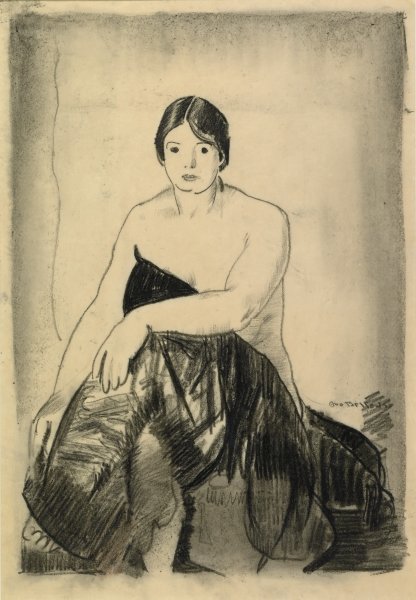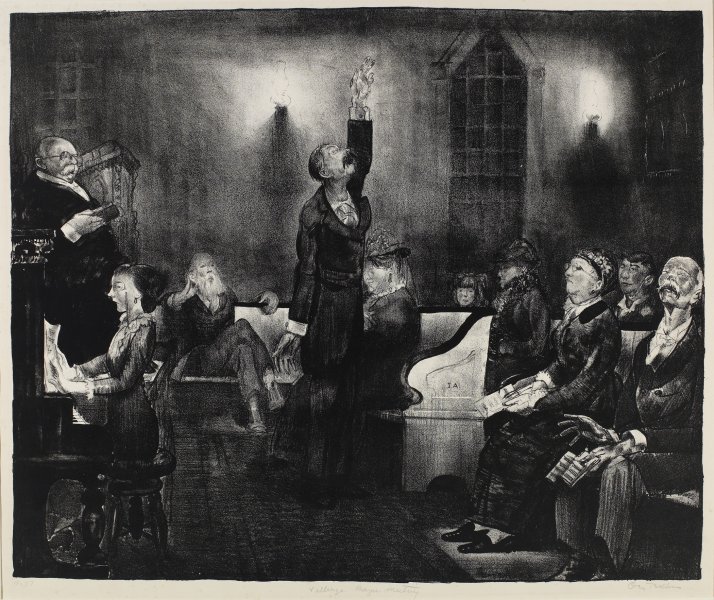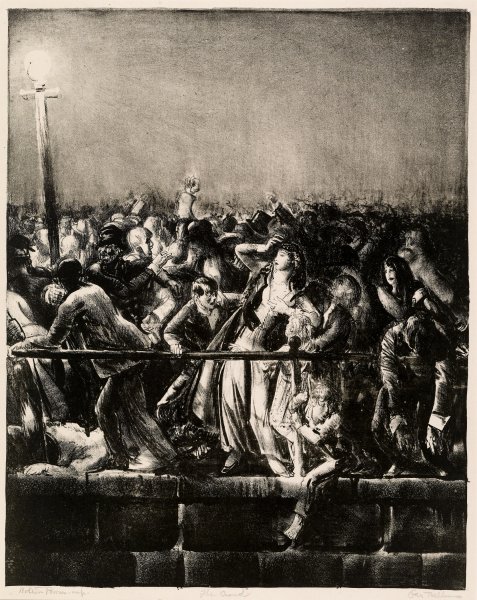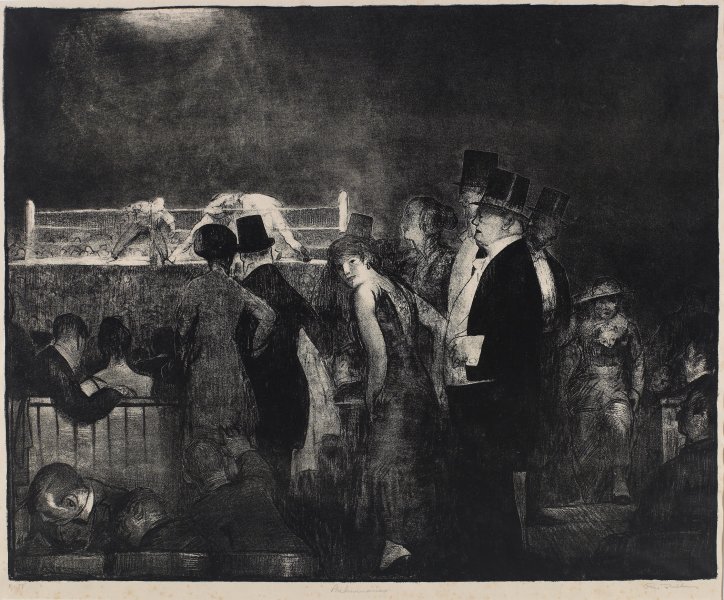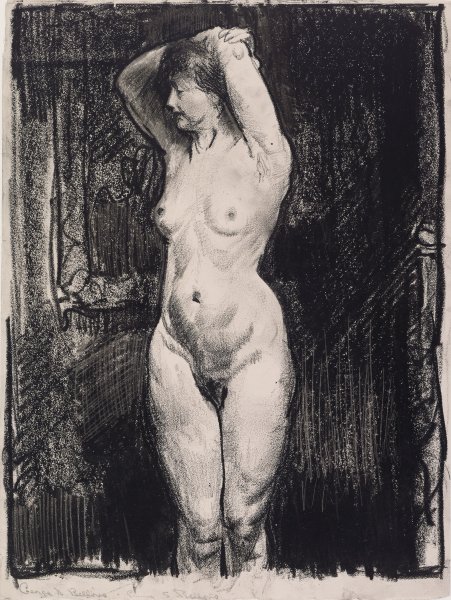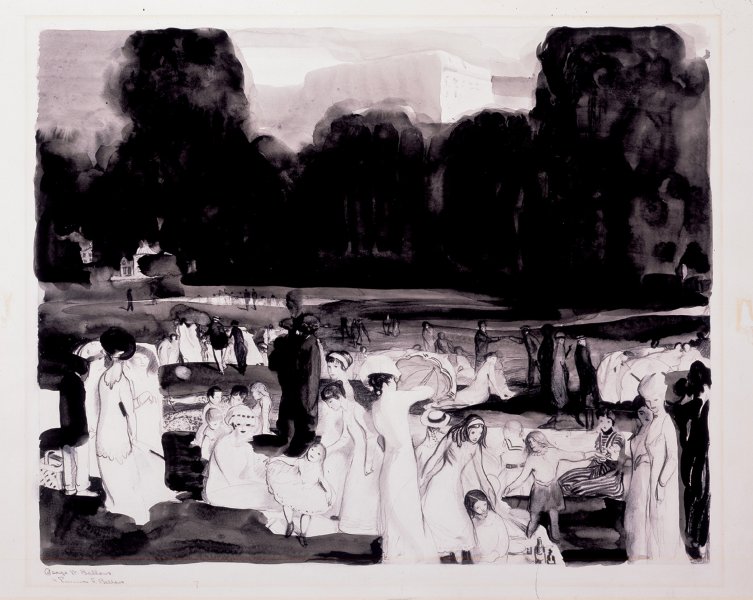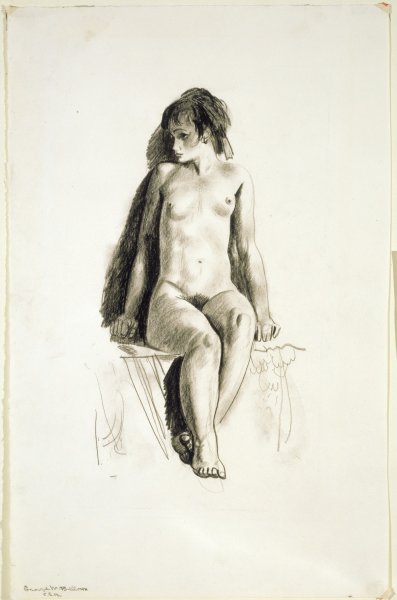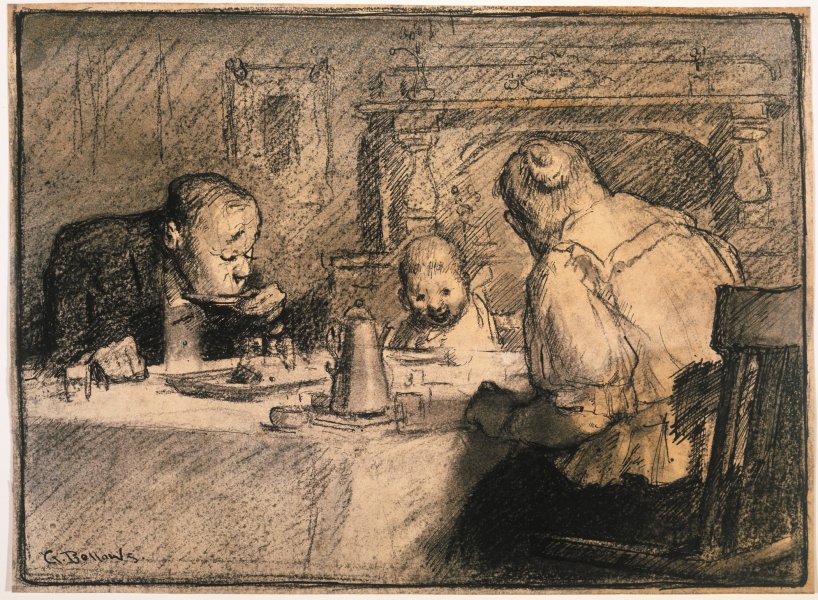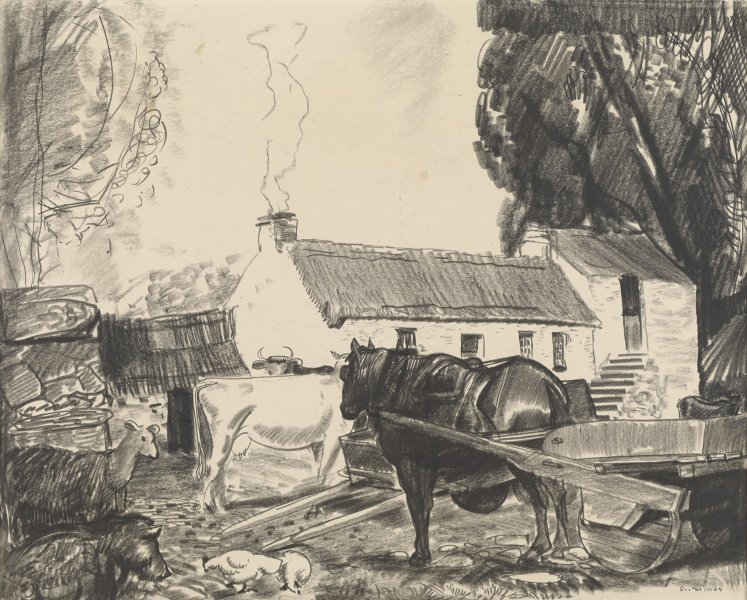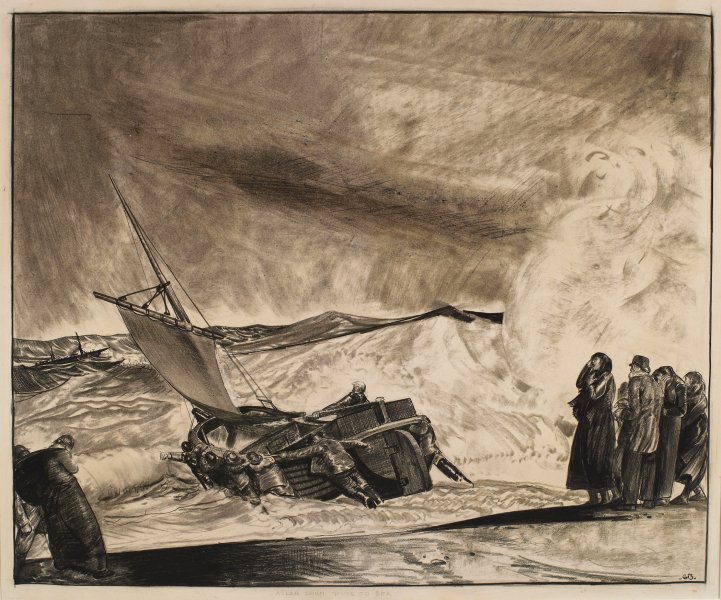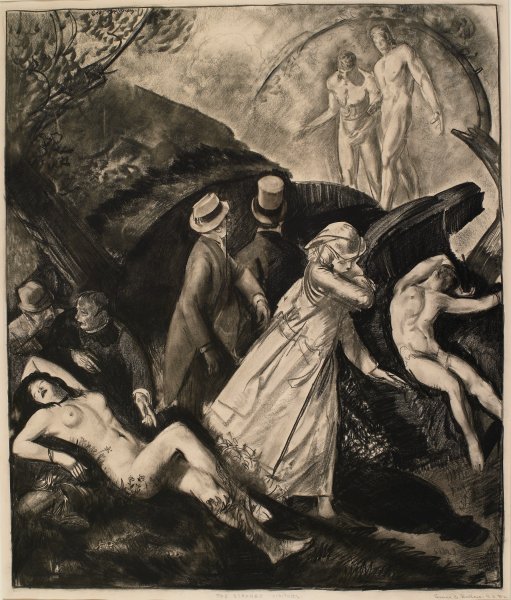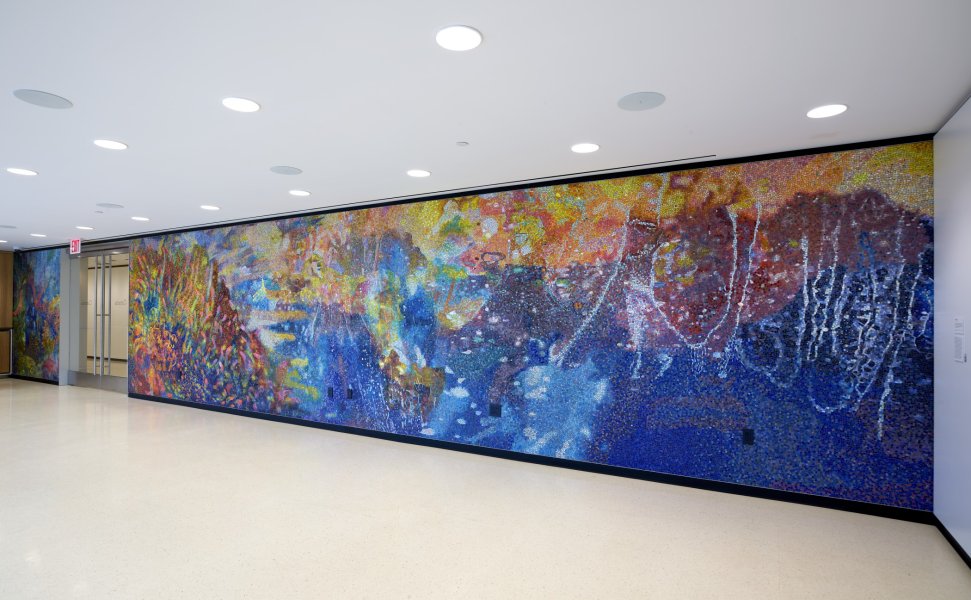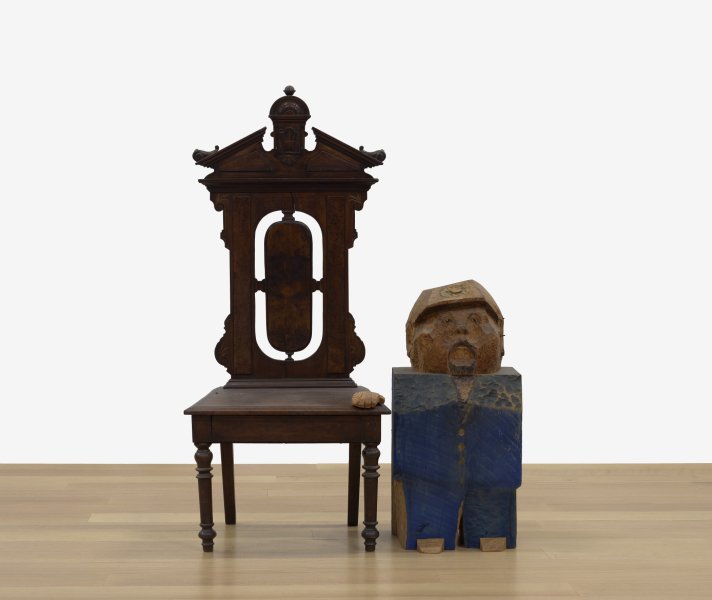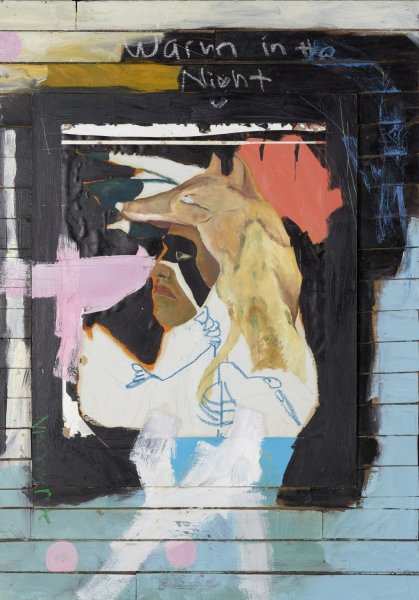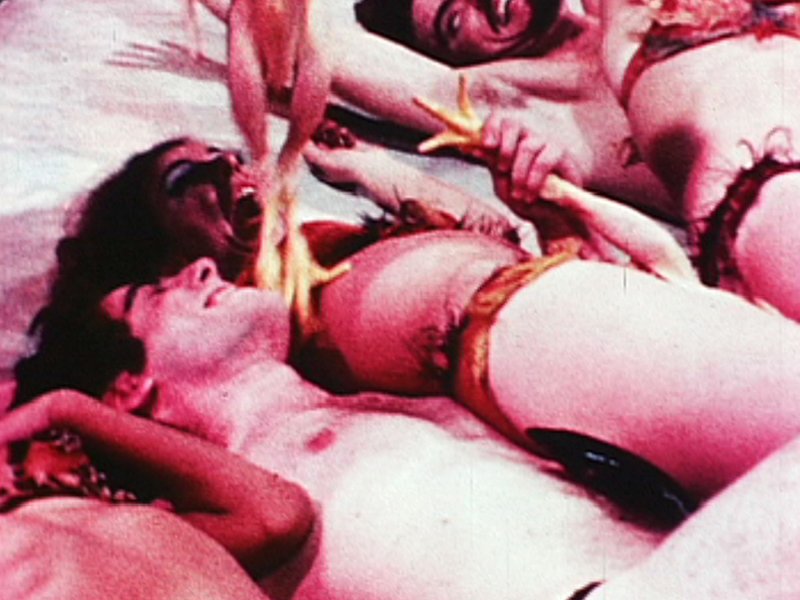George Wesley Bellows
American, 1882-1925
Elinor, Jean and Anna, 1920
Artwork Details
Currently on View
Collection Highlight
Materials
oil on canvas
Measurements
support: 59 x 66 inches (149.86 x 167.64 cm); framed: 68 x 75 1/8 x 4 1/2 inches (172.72 x 190.82 x 11.43 cm)
Collection Buffalo AKG Art Museum
Credit
Charles Clifton Fund, 1923
Accession ID
1923:32
Although not an official member of the Ashcan School, George Bellows was strongly influenced by this alliance of early twentieth-century realist artists best known for their honest depictions of the inhabitants and conditions of New York’s poorer neighborhoods. By 1904, Bellows had achieved success as a painter of boxing matches and gritty scenes of life in New York’s tenement buildings. Elinor, Jean and Anna dates to the last few years of his career, during which he executed a number of large-scale portraits of his family and close friends.
This somber, three-generational representation of his aunt Elinor, his five-year-old daughter Jean, and his mother Anna is Bellows’s largest family grouping. The artist had previously painted individual portraits of all three subjects. Despite its dark, restricted palette, this image conveys human warmth and nuance. In contrast to his earlier works, the composition of Elinor, Jean and Anna is more reasoned and calculated. The sitters are depicted in a triangular formation set against a backdrop, which divides the canvas vertically into two equal halves. A clear definition between light and dark further heightens this formal structure in addition to serving as a contrast between youth and old age. A singular gesture—the extension of Elinor’s hand toward young Anna—symbolizes life renewed and the passage of wisdom onto the future generation.
